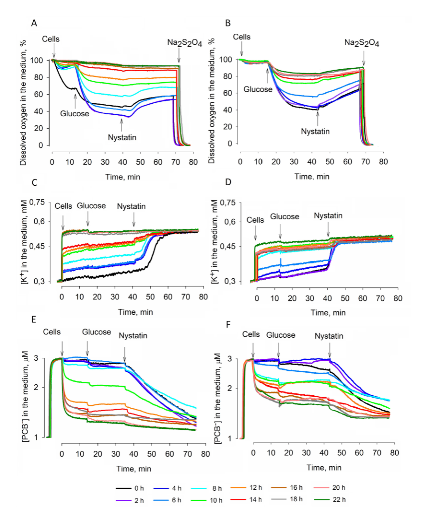Anhydrobiosis is the state of life when cells get into waterless conditions and gradually cease their metabolism. In this study, we determined the sequence of events in Saccharomyces cerevisiae energy metabolism during processes of dehydration and rehydration. The intensities of respiration and acidification of the medium, the amounts of Phenyldicarbaundecaborane (PCB-) bound to yeast membranes, and the capabilities of cells to accumulate K+ were assayed using electrochemical monitoring system, and intracellular content of ATP was measured using bioluminescence assay. Mesophilic, semi-resistant to desiccation S. cerevisiae strain 14 and thermotolerant, very resistant to desiccation S. cerevisiae strain 77 cells were compared. After 22 h of drying it was possible to restore the respiration activity of very resistant to desiccation strain 77 cells, especially when glucose was available. PCB- binding also indicated considerably higher metabolic activity of dehydrated S. cerevisiae strain 77 cells. Electrochemical K+ content and medium acidification assays indicated that permeabilization of the plasma membrane in cells of both strains started almost simultaneously, after 8-10 h of desiccation, but semi-resistant strain 14 cells were longer keeping K+ gradient and stronger acidifying the medium. For both cells, the fast rehydration in water was less efficient compared to reactivation in the growth medium, indicating the need for nutrients for the recovery. Higher viability of strain 77 cells after rehydration could be due to the higher stability of their mitochondria.

